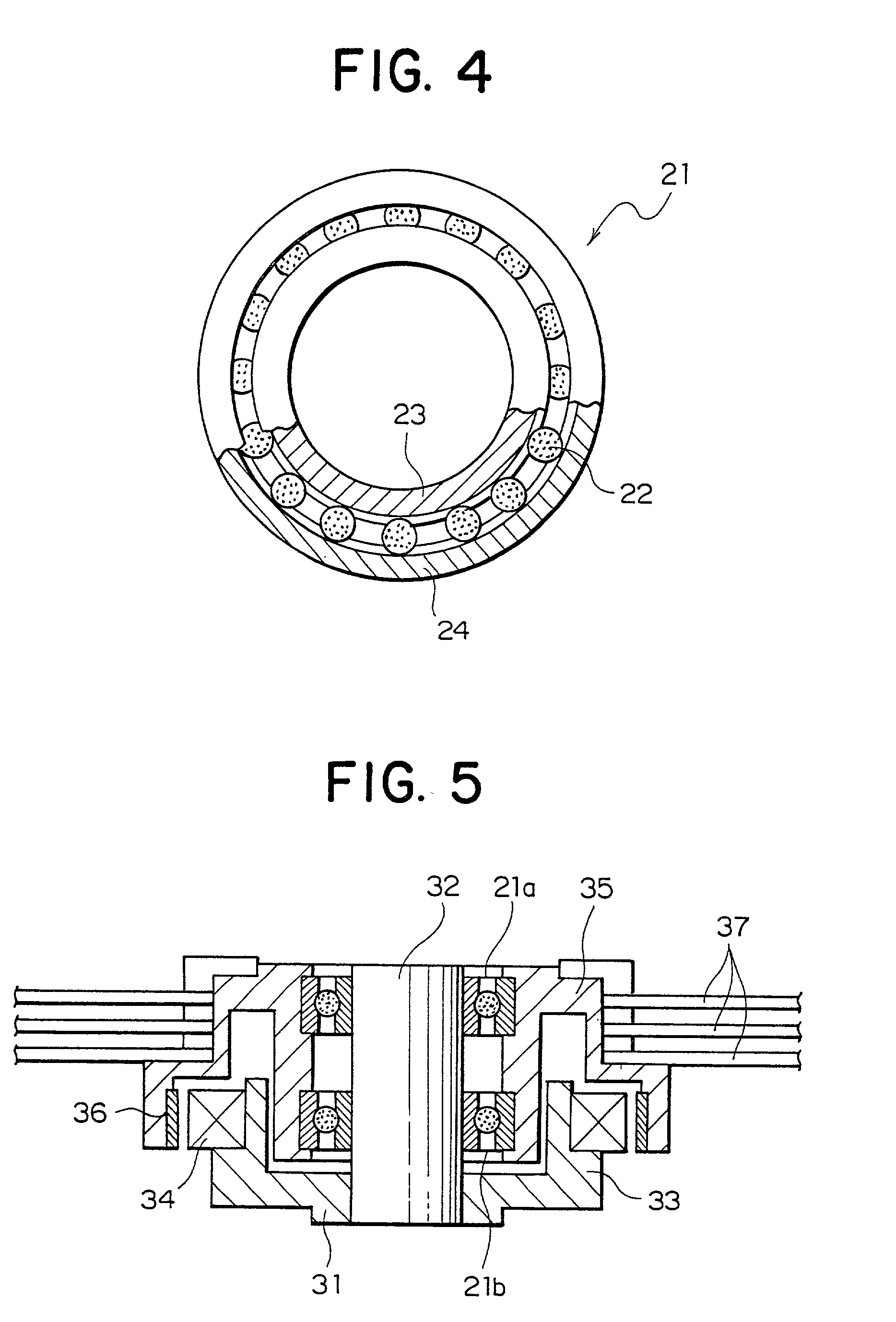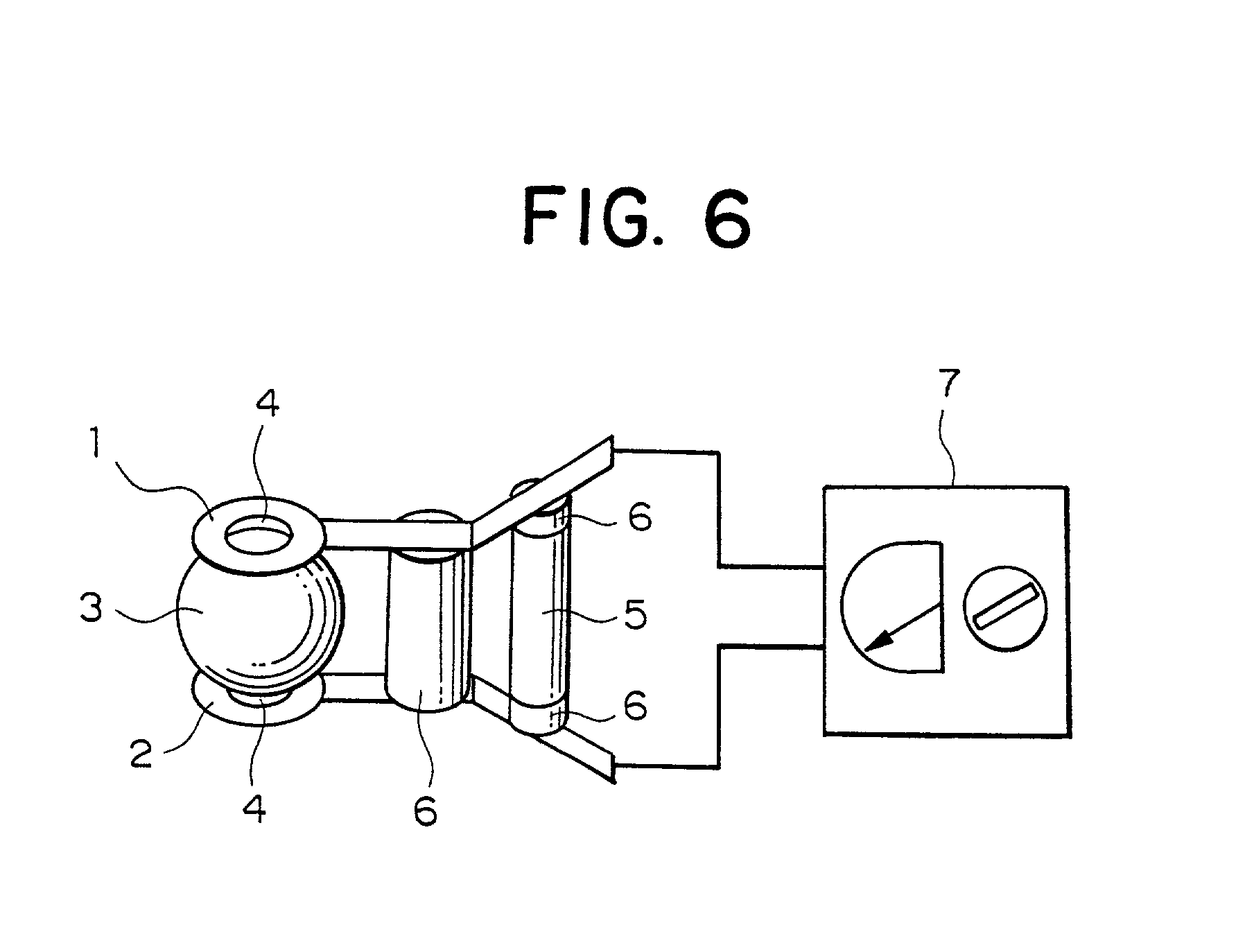Wear resistant member for electronic equipment and bearing and spindle motor therewith
a technology of electronic equipment and spindle motors, which is applied in the field of wear resistance members, can solve the problems of poor wear resistance of metals such as bearing steel or the like, inability to provide reliable rotational drives, and inability to skillfully guide static electricity generated when rotating at high speeds
- Summary
- Abstract
- Description
- Claims
- Application Information
AI Technical Summary
Benefits of technology
Problems solved by technology
Method used
Image
Examples
embodiment 2
[0087] Embodiment 2
[0088] Except for altering the conductivity enhancer to materials shown in Table 2, similarly with sample 4 of Embodiment 1 (in which the conductivity enhancer is added by 20 volume percent), the respective zirconium oxide bearing balls are prepared. The specific resistance and linear expansion coefficient of each bearing ball are measured similarly with Embodiment 1. Furthermore, with these bearing balls each, similarly with Embodiment 1, the bearings and spindle motors are assembled. Similarly with Embodiment 1, the deficiency due to the static electricity and the sliding properties (high speed rotatability) of the respective spindle motors are investigated. These results are shown in Table 2.
2 TABLE 2 Linear Defi- Change expan- ciency rate of Matrial of Specific sion due to slid- Sam- conduc- resis- coeffi- static ing ple tivity tance cient electri- sound No. enhancer (.OMEGA. .cndot. m) (.times. 10.sup.-6 / .degree. C.) city (%) E 1 NbC 1.0 9.7 none 3 2 2 TiC 1....
embodiment 3
[0090] Embodiment 3, Comparative Example 2
[0091] In the aforementioned Embodiment 1, niobium carbide as the conductivity enhancer is compounded by 20 weight percent in all samples to prepare a plurality of zirconium oxide bearing balls. In the preparation of these bearing balls, the average particle diameter or the like of the conductivity enhancer is altered to control the maximum agglomerate diameter of the conductivity enhancer present on the surface of the bearing ball. The maximum agglomerate diameters of the conductivity enhancer are as shown in Table 3. The diameter of the bearing balls is 2 mm, surface polishing grade being 3. The specific resistance is all 1 .OMEGA..multidot.m.
[0092] With the aforementioned bearing balls each, similarly with Embodiment 1 the bearings and spindle motors are assembled, respectively. Similarly with Embodiment 1, the deficiency due to the static electricity and sliding properties (high speed rotatability) of the spindle motors each are investig...
embodiment 4
[0095] Embodiment 4, Comparative Example 3
[0096] First, niobium carbide powder of an average particle diameter of 1.8 .mu.m or less (standard deviation is 1.5 .mu.m or less) as the conductivity enhancer, yttrium oxide powder of an average particle diameter of 1.5 .mu.m as the stabilizer and zirconium oxide powder of an average particle diameter of 0.7 .mu.m are prepared. The raw material powders each are divided into three to mix. Three mixed powders each are furthermore mixed to prepare the respective mixed raw material powders. Thus, the raw material powders each are mixed step by step to prevent the conductivity enhancer powder from agglomerating.
[0097] With the aforementioned mixed raw material powders each, similarly with Embodiment 1, a plurality of zirconium oxide bearing balls are prepared. The diameter of each bearing ball is 3 mm and surface polishing grade is set at 3. The number of the conductivity enhancer in a straight distance 50 .mu.m of these bearing balls each are ...
PUM
| Property | Measurement | Unit |
|---|---|---|
| Diameter | aaaaa | aaaaa |
| Current | aaaaa | aaaaa |
| Current | aaaaa | aaaaa |
Abstract
Description
Claims
Application Information
 Login to View More
Login to View More - R&D
- Intellectual Property
- Life Sciences
- Materials
- Tech Scout
- Unparalleled Data Quality
- Higher Quality Content
- 60% Fewer Hallucinations
Browse by: Latest US Patents, China's latest patents, Technical Efficacy Thesaurus, Application Domain, Technology Topic, Popular Technical Reports.
© 2025 PatSnap. All rights reserved.Legal|Privacy policy|Modern Slavery Act Transparency Statement|Sitemap|About US| Contact US: help@patsnap.com



